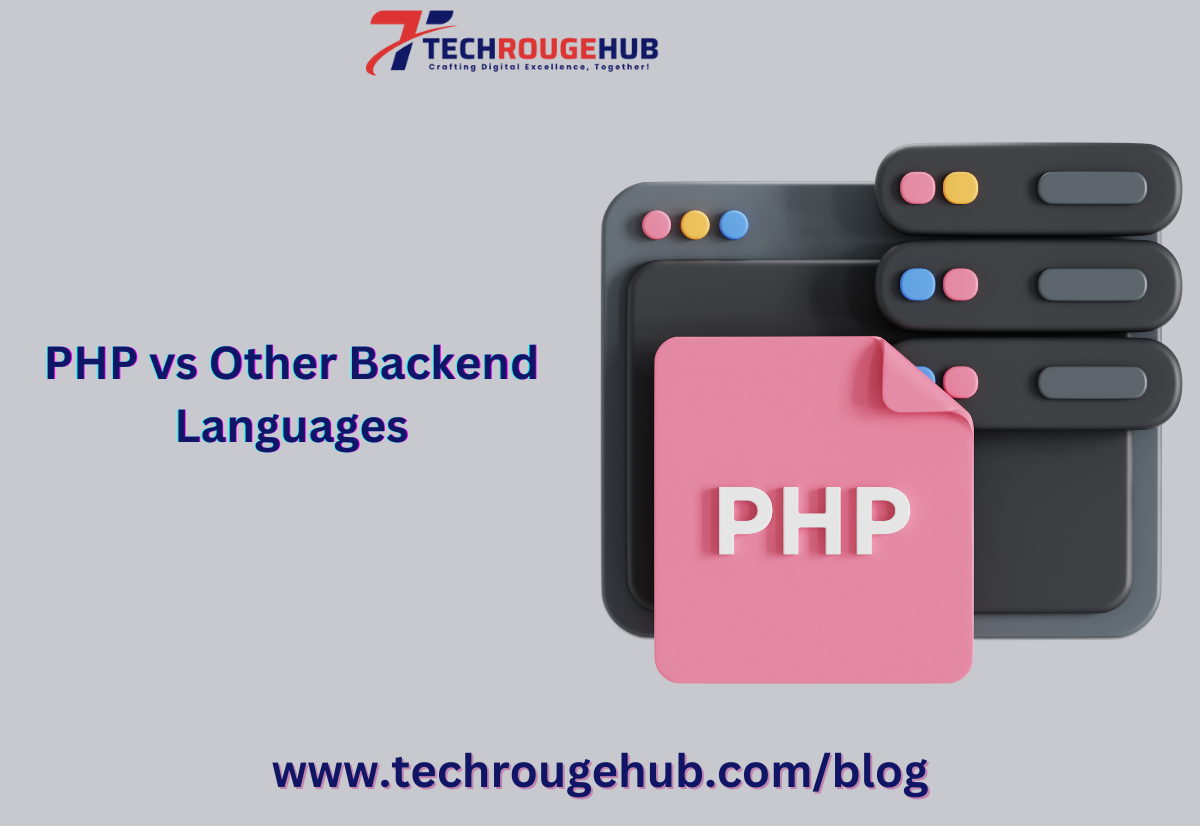PHP vs Other Backend Languages: Which One Should You Choose?
When it comes to backend development, choosing the right programming language is crucial. PHP has long been a popular choice, but other backend languages like Python, Node.js, Ruby, and Java are also widely used. Each language has its strengths and is best suited for specific use cases. In this blog, we’ll compare PHP with other backend languages to help you decide which one is the best fit for your project.
1. PHP: The Web Development Giant
PHP (Hypertext Preprocessor) is a server-side scripting language specifically designed for web development. It powers nearly 80% of websites, including WordPress, Facebook, and Wikipedia.
Pros of PHP:
- Easy to learn and use – Beginner-friendly syntax with a vast community.
- Built for web development – Optimized for handling web requests.
- Large ecosystem – Extensive libraries, frameworks (Laravel, CodeIgniter), and CMSs (WordPress, Joomla, Drupal).
- Cost-effective – Open-source with affordable hosting options.
Cons of PHP:
- Slower execution speed compared to some modern languages.
- Inconsistent syntax due to its long history and multiple iterations.
2. PHP vs Python
Python is a general-purpose language that has gained popularity in web development, data science, and automation.
Why Choose Python?
- Readable and clean syntax – Easier for beginners and maintainable in the long run.
- Strong in AI and machine learning – Preferred for data-driven applications.
- Django and Flask frameworks – Provide powerful and scalable web development options.
When to Choose PHP?
- If you need a quick and cost-effective solution for web development.
- When working with content management systems like WordPress.
- If you need a language built specifically for web applications.
3. PHP vs Node.js
Node.js is a JavaScript runtime that allows developers to use JavaScript for backend development.
Why Choose Node.js?
- Non-blocking I/O – Handles multiple requests efficiently.
- Full-stack JavaScript – Developers can use the same language for both frontend and backend.
- Great for real-time applications – Ideal for chat apps, live streaming, and collaborative tools.
When to Choose PHP?
- If you need server-side rendering and traditional web development.
- When working on a project that heavily depends on relational databases.
4. PHP vs Ruby
Ruby, known for its elegant syntax and Rails framework, is popular among startups and rapid development projects.
Why Choose Ruby?
- Rapid development – Ruby on Rails simplifies building web applications quickly.
- Elegant and readable code – Focuses on developer productivity.
- Good for MVPs and startups – Allows for quick iterations.
When to Choose PHP?
- If you need a more widely supported language with numerous hosting options.
- If you want a language that integrates well with WordPress and other CMSs.
5. PHP vs Java
Java is a powerful, enterprise-level language used for large-scale applications.
Why Choose Java?
- Highly secure – Often used for banking and enterprise applications.
- Strong multi-threading capabilities – Efficient for handling multiple tasks.
- Platform-independent – Runs on any operating system with the JVM.
When to Choose PHP?
- If your project focuses primarily on web development.
- When you need a lightweight and fast solution.
- If budget constraints are a concern, as Java hosting can be costly.
Conclusion: Which One Should You Choose?
The choice between PHP and other backend languages depends on your project requirements:
- Choose PHP if you’re developing web applications, CMS-based websites, or eCommerce platforms.
- Choose Python for AI-driven applications, automation, and data analysis.
- Choose Node.js for real-time applications and full-stack JavaScript development.
- Choose Ruby for quick MVP development and startup projects.
- Choose Java for enterprise-level applications with high security and scalability needs.
Ultimately, every language has its place in web development, and the best choice depends on your project’s goals, performance requirements, and team expertise. Happy coding!

